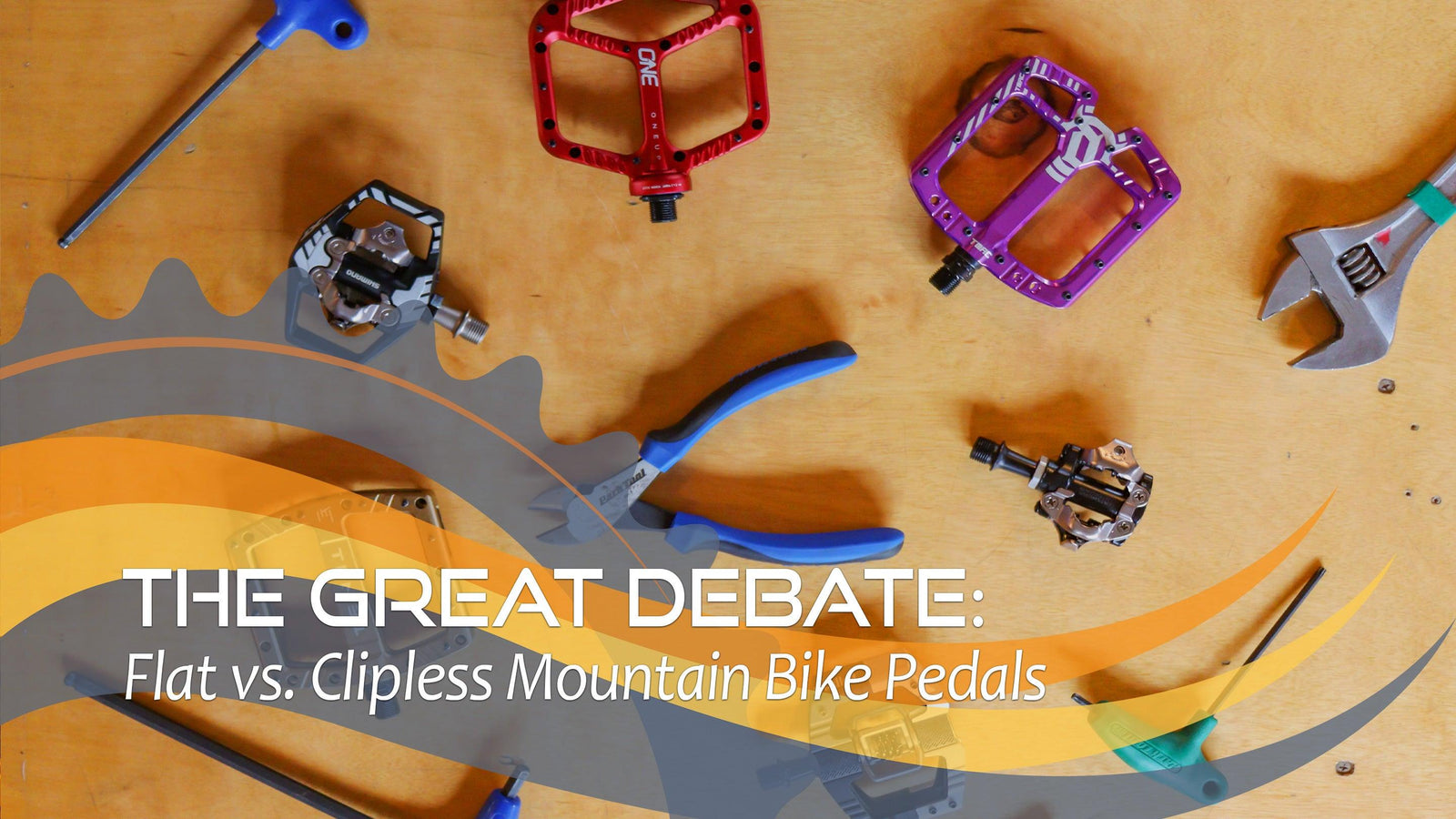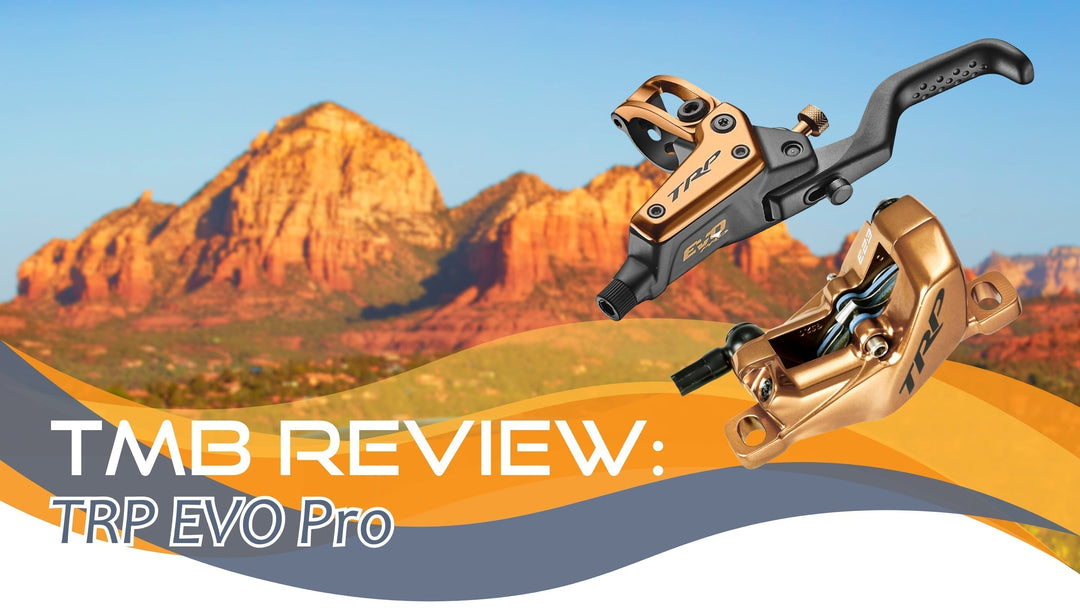The Great Debate: Flat vs. Clipless Mountain Bike Pedals

What style pedals are right for you? And how do you pick the best model?
In the mountain biking culture wars—carbon frame or metal? dropper seatpost versus rigid? SRAM or Shimano? beard, mustache, or baby face—few subjects inspire more angst than the question of pedals.
Freeriders and shredders will insist that the superiority of flat pedals, or platforms, is as irrefutable as sunrise and sunset. While most racer types would as soon carry a brick in their jersey pocket as give up their clipless pedals.
Meanwhile, newcomers to the sport (rightly!?) can’t believe that after shelling out the equivalent of a small mortgage down payment to get a bike, they can’t even ride it till they plunk down more for pedals.
To wade through this fraught dispute, we turned to some of TMB’s resident wrenches, riders, and friends.
The good news: solid arguments support both styles of pedals.
And there’s even reasonable rationale for why bikes don’t ship with pedals.

Consider this our definitive word in the great pedal debate:
The case for flat pedals
Pretty much everyone agrees that riders who are brand new to mountain biking should start on flat pedals.
The ease of dismounting from flats makes them ideal for learning. Rather than fixating on the finicky movement it takes to get out of clipless pedals (and suffering through the inevitable slow-speed crashes when you don’t), riders can instead focus on learning proper body positioning, foot placements, and the flow of riding and moving a bike around.

In general, Sedona mountain biking, with its broad stretches of slickrock sandstone, knee-high steps, and sometimes steep ramps and chutes, favors flats.
“It’s easier to put all your energy into making a move if you’re not worrying about unclipping,” says Michael Raney, co-owner of Thunder Mountain Bikes. “Flats can take away some of the stress and let you focus on the ride.”
But, says Evan Puglia, past GM at Thunder Mountain Bikes and co-founder of Sedona Mountain Bike Academy (SMBA), that doesn’t mean platforms are only for beginners.
“You can learn to establish a much stronger bike-to-body connection riding flats,” explains Puglia, SMBA’s top accredited coach. “It’s easier to learn foundational skills, such as track stands and wheel lifts. But flats also help hone more advanced techniques, including bunny hops, jumps, wheelies, manuals, and rear wheel lifts.” Puglia says flats are excellent for developing the ability to scoop and claw your feet, and the ankle flexion it takes to do so.
Puglia grew up riding and racing clipless pedals, as do many mountain bikers who come from a cross-country background. But a few years back he decided to try flats.
“Even though I’d been riding my whole life, it was difficult at first. Clipless pedals can compensate for many of these techniques, so I had a lot to learn,” he says. “But learning to ride flats created a huge difference in the trajectory of my skills and progress.”
Flat pedals can also be useful for those with injuries and body imbalances.
Following a series of back traumas, XC national champ and 2012 Olympian Sam Schultz took a physical therapist’s advice and swapped a career’s worth of clipless riding for flat pedals. By developing the grip to stay on the flats, the hope was Schultz would recruit more glute muscles and less hip flexors, thus alleviating nerve impingement.
The PT also said that dividing out the pedaling motion between the sides would avoid systemic imbalances, and the flats would also build core by forcing Shultz to work to stay engaged at all times.
“It forced me to clean up my pedal stroke, my back issues improved, and I never returned to clipless,” says Schultz. “It wasn’t just the therapy either. Flats just feel more fun and playful.”
| Check out TMB’s favorite flats here.
The case for clipless pedals
With all those benefits, you might be wondering, why would I ride anything but flats?
“There are definite advantages to riding clipless,” says Puglia.
“They improve your efficiency. They help refine a complete pedal stroke. And when you are trying to really rip through extremely technical or chunky terrain, clips let you focus on the form that will make you fast without having to concentrate on staying attached to the bike.”

While flat pedals mostly favor downward pressure to generate forward motion, clipless pedals, in which your feet are constantly attached, allow for upward, or pulling, force as well. This is why they are favored for racing: Not only do you get power from the backstroke on the cranks, but you can also learn to generate force on the upstroke (between about 7p.m. and 11p.m., if the crank is a clock). More input power means more forward motion, which is critical in short, fast efforts.
“If you grow up racing, you learn to ‘pedal circles,’” says Shultz, where you’re eking out power from every available position in your pedal stroke. “Honestly, the compromise of riding flats is small and not that important in most situations. But if I were to ever start racing cross-country at the highest level, I would do it clipless.”
So clipless pedals are either a specific tool for a specific application and/or they are a compensation for skills you either do or don’t already have.
“I switch back and forth between flats and clipless,” says Raney. “But when I really have to go hard, I see it like skiing: I would never strap on skis without bindings. So yeah, when I want to go big, I ride clipless.”
Schultz underscores the point. “I love flats,” he says. “And when I go back to clipless, I feel like Superman.”
| Check out TMB’s favorite clipless pedals here.
Why can’t we all just get along?
So basically, the choice between flats and clipless is a wash. Depends on where you’re at in your cycling career, what you want to achieve, how many skills you have and want to develop, and all those basic personal preferences. You get to pick.
Then again, Evan Puglia believes there’s no need to choose. “Both flats and clipless have their pros and cons, and both can be used effectively for all riding,” he says.
Choosing will depend on the trails you frequent, your style of mountain biking, and what you want out of riding. Says Puglia, in the classic Velominati N+1 style, “A well-rounded rider has two sets of pedals. It’s good to ride both.”

And that speaks to exactly why bike manufacturers don’t ship pedals with their bikes.
Even if a bike manufacturer could predict whether a rider prefers flats or clipless, it would be impossible to choose what style and model pedal they would choose. That would probably result in a lot of brand new pedals landing in the dump.
So in the end, it’s best to cut the cost out of the bike price and let you spend the cash on the pedals you prefer.

|
by Aaron Gulley Aaron has been writing about cycling, travel, and the outdoors and reviewing gear for the likes of Outside, Bicycling, Velonews, and others for over two decades. |





